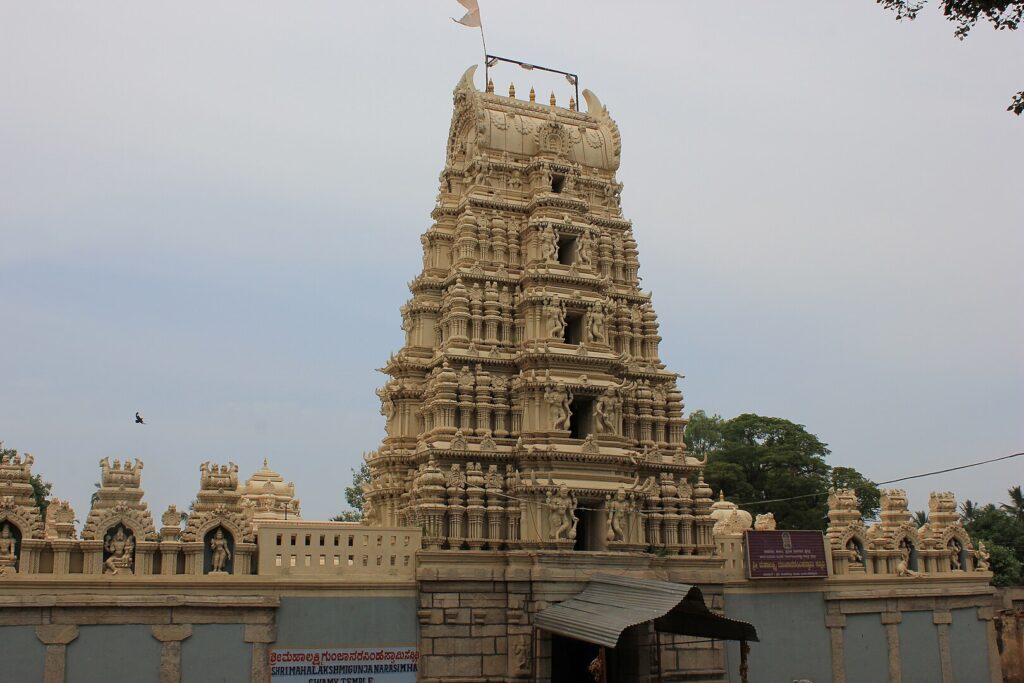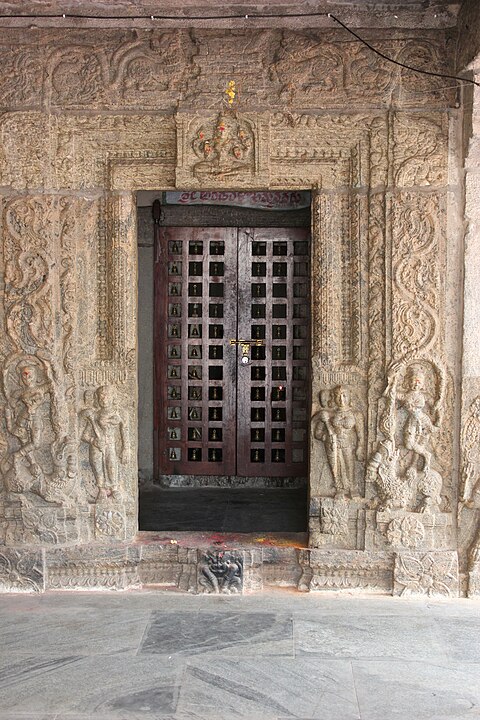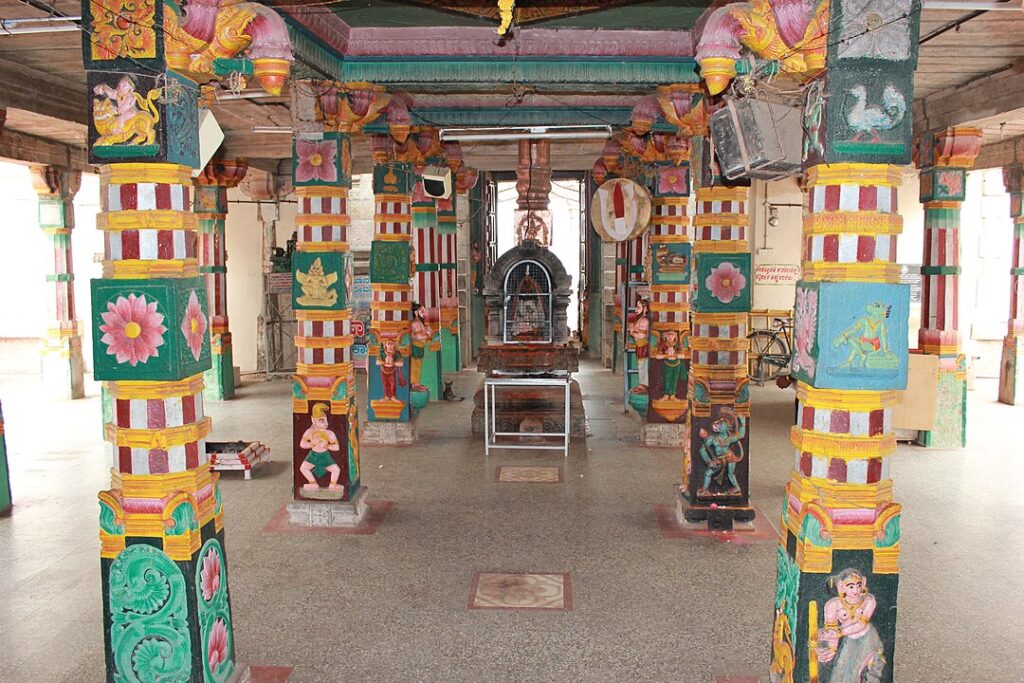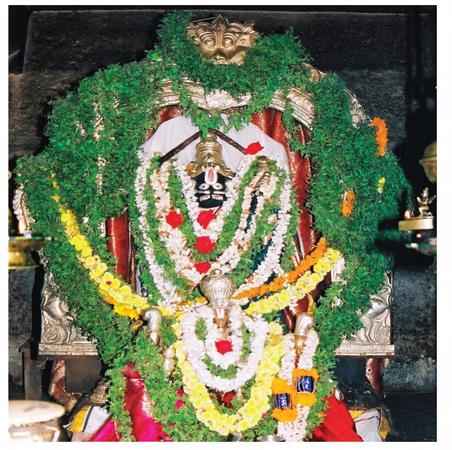Gunja Narasimha Swamy Temple
Next to Andhra Pradesh and Telangana, there are several well-known and lesser-known Sri Narasimha Swamy Temples in Karnataka. Some are in the crowded cities/towns which are ancient and hence in the interior area; some are on the river banks and some on the confluence of three rivers such as Nira Narasingpur in Maharashtra and some in the caves.
However, there is one temple which is dedicated to Lord Narasimha Swamy (Gunja Narasimha Swamy) in Tirumakudal Narasipura locally called TN Pura. This temple is old and unique. It is well known for ‘’Kumbha Mela’’ in South India. It is on the right bank of the Kaveri.
Two other rivers Kapila and Spatika which is Gupta (hidden) join the confluence. This place is just about 30 Km from Mysore on Mysore Kollegal State Highway and about 140 Km from Bengaluru.
Gunja Shri Lakshmi Narasimhaswami Temple – Google Map’s Location

Sthala Purana
Before this Temple came into existence in this area near Kaveri River, one Washerman (Dhobi) was daily coming to wash clothes on one big stone. One night he had a dream in which Lord Narasimha asked him to remove his idol which is below the stone on which he was washing the clothes and construct a temple for him. But he asked God where and how he would get money for this work.
Finding Gold
Lord asked him to look under the stone. He removed the stone dug the soil and found some gold coins there. He then arranged to construct the Sanctum Sanctorum for Lord and used the stone also he was using for washing the clothes. Lord after seeing this Temple asked him to visit Kashi which is now known as Varanasi in U.P, the very famous Pilgrim Center.
Dakshin Kashi
He visited and the Lord told him that he earned an additional Punya (Merit or Sanchit) of about a coral bead vine seed (Rosary Pea) more than that one accrues by visiting Kashi. So with this, this place became ‘‘Dakshin Kashi’’ for him and it is said that devotees who visit this ‘‘Gunja Narasimha Swami Temple’’ get one Gunja more Punya than Kashi. And the name tag Gunja came into usage with the name of the God Narasimha.
It signifies therefore the importance of this place and vice versa to Kashi. Gunja is a seed from a plant known as Rosary Pea or Gulaganji in Kannada The botanical Name is Abrus Precatorius. This plant grows in front of this temple and on the sides.
As Washerman built this temple and wished that he would be given Moksha which the Lord granted, after Washerman’s death, the temple authorities of that time carved their images on the threshold [Hostilu in Kannada] of the door in his memory and his wife’s.

Temple Renovations
Over time, Gunja Narasimha Swamy temple was renovated by the then-ruling kings in Dravidian style. Hoysala architecture with inscriptions from the Krishadevaraya period in Nagari script is also found. The temple is a protected monument under the Karnataka state division of the Archaeological Survey of India.
However, there was another major repair and restoration work needed in recent times due to flooding and loosening of soil during the year 2008 in this temple. It developed cracks and some structures of the temple crumbled.
However, some devotees extended help for this work and completed it with the help of the descendant.
Inside the Temple
On entering the temple there are colorful pillars in Ranga Mandapa followed by the main Sanctum where the main idol is seen weighing balance with a twig (berry stalk) with seeds of Gunja tree between his thumb and forefinger.
Another interesting aspect to note is that the devotees here (who believe it as an ill omen if the Lizard falls on any part of the Body,) touch the Lizard carved inside the roof just like Kanchipuram’s Varadaraja Perumal temple (Arulmigu Sri Varadharaja Perumal Temple) to remove the evil effect. Devotees climb up one small ladder kept there to touch it and get rid of any doshas on them.

About Temple Rituals and Festivals
The temple is open daily from 9 AM to 12:30 PM and 5:30 to 8:30 PM and Puja is performed as per Agama Shastra.
Every year Chariot / Car Festival is conducted for Narasimha Swamy and Agastheswara Swamy and once in three years Kumbha Mela is held for three days. The Kumbha Mela commenced in 1989 in this holy place of which there is reference in Skanda Purana.
The Kumbha Mela of Allahabad and Nashik is replicated here when lakhs of devotees assemble to take a holy dip in the confluence of three rivers. A spectacular view of ancient India unfolds with ochre-clad sadhus joining people to take a dip.
Devotees may visit one temple after another in this town. One of the oldest Peepal Trees (Botanical name Ficus religiosa) is situated here. It is said to be approx. 200 years old. The place is known as “Bahuvara Prasadi’’.
It is believed that childless couples come here to pray for a child and install a Naga idol to fulfill their wishes.
Pancha Linga Darshan
Devotees go for Pancha Linga Darshan when they come here.
These Lingams are
- Markandeswara Lingam,
- Someshwara Lingam,
- Garageshwara Lingam,
- Agastheshwara and
- Hanuman Lingam.
Hanuman Linga Agastheshwara Temple which is one of five Pancha Lingams which was believed to be founded by Agastha Rishi is worth visiting. To reach this temple, one has to cross a river in Coracle. Ganapathi Temple and Sri Sasal Vyasaraya Mutt are other attractions.

